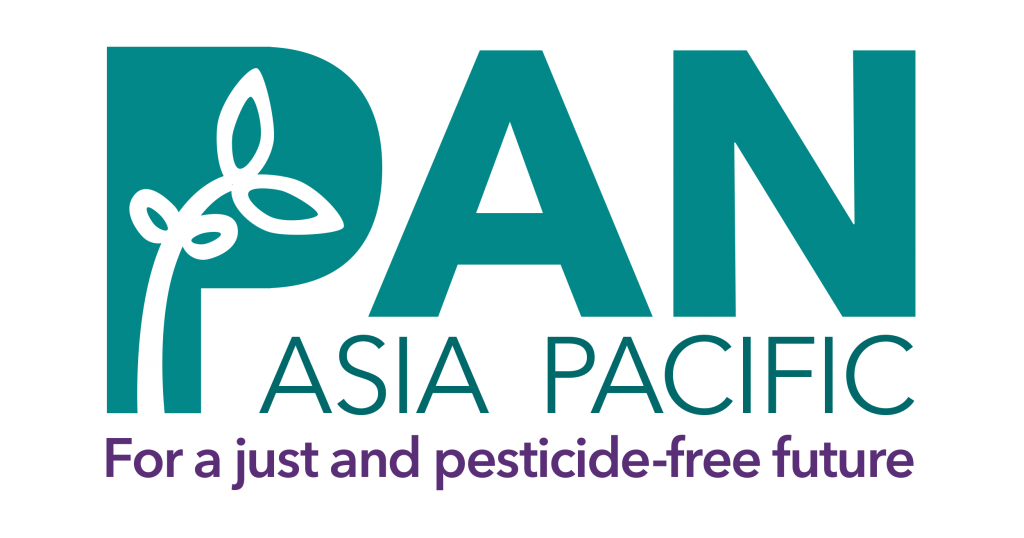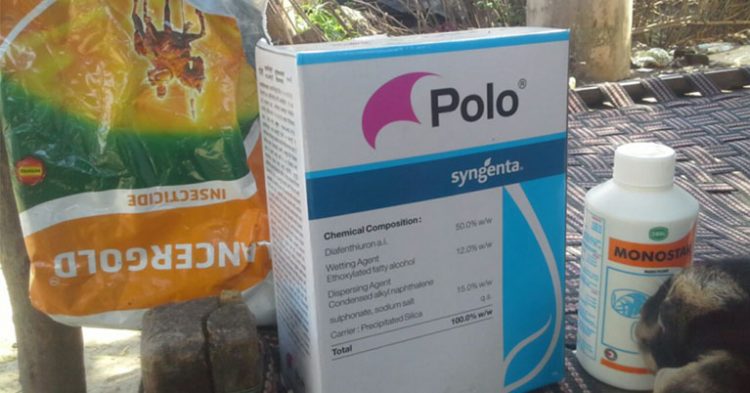The death of 36 farmers and the hospitalization of at least 500 in a matter of three months in the Bt cotton fields of India is alarming. Pesticide Action Network (PAN) India looked into the tragedy in Yavatmal District and uncovered gaps in governance and regulation. The report called for a thorough review and amendment of the pesticide regulation in the country.
Along with other cocktail of pesticides, the PAN India team found that the victims sprayed with no or minimal protective gear monocrotophos, diafenthiuron, profenofos and fipronil. All of these have been classified as highly hazardous pesticides (HHPs) for being carcinogenic, endocrine disruptors and/or neurotoxic.
Dr. D. Narasimha Reddy, PAN India Director and head of the investigating team lamented, “This is indeed a national tragedy. The farmers wanted to save their Bt cottons from massive pest attacks that they resorted to the use of pesticides. Yet, how would the farmers know the hazards of these pesticides when the label information is not in their language?
“Almost all of the surviving victims had never used personal protective equipment. They complained of eye irritation, and burning sensation on the eyes and face. One victim said that the pesticide spray fell back to his face several times due to the wind direction, and attributed such mishap to the overgrown Bt cotton that reached nearly six feet.“
The increase in height of Bt cotton could be due to monocrotophos, which the farmers used after the Bt cotton’s resistance to pests weakened. Nagpur-based Central Institute of Cotton Research (CICR) said that this insecticide most commonly used in the area, stimulates growth and has a greening effect on plants.
Monocrotophos is banned in 60 countries and is in the Rotterdam Convention Prior Informed Procedure List (PIC) and the PAN’s Terrible Twenty (T20) pesticides. It was implicated in the midday meal tragedy that killed 27 schoolchildren in Chapra, Bihar. The two other HHPs – diafenthiuron and profenos – are banned in 29 countries while fipronil, in eight countries.
Deeppa Ravindran, PANAP Pesticides Programme Coordinator, did not seem puzzled by the tragedy. “India’s unregulated use of highly hazardous pesticides can be likened to a ticking time bomb. Time and again, PANAP and its partners have called on the Indian government to ban these chemicals especially since the use of personal protective equipment in hot and humid countries is unmanageable if not outright unbearable for the users.”
Per Code of Conduct on Pesticide Management, HHPs “… present particularly high levels of acute or chronic hazards to health or environment … (and) appear to cause severe or irreversible harm to health or the environment under conditions of use in a country...”

The team that includes Dileep Kumar A. D. and Adv. Barun Kumar, also reported the lack of monitoring/medical support and expertise for pesticide use/poisonings in Yavatmal.
“It is a pity that the farmers were not adequately informed of the hazards of the pesticides they were using. The medical staff’s lack of expertise in handling pesticide poisoning cases is deplorable. How could they simply treat all pesticide poisonings with atropine which is good only for organophosphates? They didn’t even do blood tests before the treatment,” mourned PAN India’s Director Chelaton Jayakumar.
Of the reported pesticide brands used by the victims, Monocil is the only “pure” organophosphate (OP). Profex Super is a combination of an OP and pyrethroid. Polo is a thiourea, while Police is made up of neonicotinoid and pyrazole. The technical ingredient of two other brands Gayathri and Tonic could not be traced. Except for OP, the rest have no specific antidote.
According to Sarojeni Rengam, Executive Director of Pesticide Action Network Asia-Pacific (PANAP), “The magnitude of farmer deaths stresses the need for a doctors’ training-workshop on pesticide poisoning diagnosis and for the development of a framework that would address poisonings immediately.
“We have been doing alot of community-based monitoring of pesticide use and impacts, and we have seen how victims were simply given paracetamol to relieve the poisoning symptoms. It is high time that the State Government seriously attends to the plight of the farmers and heed the call to adopt agroecology as a stratagem in farming,” Rengam explained.
Ravindran mused, “PAN India’s report hopefully will push India’s government to act now on an issue that it has constantly evaded. It is unfortunate that the previous tragedies did not make a dent on India’s policy. May PAN India’s report lead not only to legislative changes but to a paradigm shift that will free the country of its dependence on agrochemicals.”
Local State government could not escape accountability. After banning the use of “Chinese” sprayers purportedly the cause of the deaths, and after questioning dealers on the sale of illegal pesticides, it formed a special investigation team to probe the reasons for the deaths. Outcome of this investigation is being awaited.
In a news report, Kishor Tiwari, the chief of the task force set up for the welfare of farmers claimed that more than 40 farmers had died and at least 2,000 hospitalised from pesticide inhalation in Vidarbha and Marathwada. He said that this is a “genocide committed by the state” and sought criminal action against the manufacturers as well as “corrupt government officials hand in glove with them”. He was quoted saying, “It’s wrong government policies and the rot in the system that are responsible for the deaths.”
Tiwari accused the Swiss agrochemicals company Syngenta, Germany’s Bayer and Bayer-owned Monsanto for distributing dangerous pesticides without sufficient safety information and violating guidelines and conditions by the Central Insecticides Board and Registration Committee (CIBRC), government of India, and the United Nations Food and Agriculture Organisation (FAO) Code of Conduct on Pesticide Management.
The PAN India report clinches, “…harmful pesticides constitute the core cause that lies at the centre of these unfortunate series of human loss, along with apathy, disdain, profiteering motives and corruption. Agro-chemicals, with toxic contents, need to be restricted, and ultimately banned.”
Dr. Reddy urged the government to rethink its policy of adopting genetically modified (GM) seeds, saying “This tragedy validates previous findings that GM seeds, like Bt cotton, will not reduce pesticide use but rather intensify it. Neither will GM seeds address poverty as the victims of poisonings could now attest.”
#
TAKE ACTION >> Urge governments to implement a one-kilometer or more pesticide-free buffer zone around schools.
For more information: Milagros S. Serrana, Pesticide Programme Science Officer, PANAP mila.serrana@panap.net
Watch the video:
http://www.bbc.com/news/av/world-asia-india-41648552/the-poison-killing-farmers-in-india
The poison killing farmers in India. Filmed and edited by Sharad Badhe. 17 Oct 2017
Thirty farmers have died and hundreds more have been admitted to hospital in the western Indian state of Maharashtra from suspected pesticide poisoning. BBC Marathi’s Mayuresh Konnur met some of the victims and their families.
Other videos:
https://www.youtube.com/watch?v=_WvoB2gRJbE
https://topdocumentaryfilms.com/the-slow-poisoning-of-india/
The Slow Poisoning of India (2012) is a 26-minute documentary film directed by Ramesh Menon and produced by the New Delhi-based The Energy and Resources Institute (TERI). It deals with the dangers of excessive use of pesticide in agriculture. India is one of the largest users of pesticide in Asia and also one of the largest manufactures. The toxins have entered into the food chain and into our breakfast, lunch and dinner.
https://topdocumentaryfilms.com/23-little-lives-indias-poisoned-children/
23 Little Lives – India’s Poisoned Children (2013; Video 26:20)
The school lunch program in India started in 2005. India’s Supreme Court decided that every child in every government primary school should receive a lunch. So every school day, 120 million Indian children receive a midday meal. And for children in Bihar, one of the poorest corners in India, it could be their only meal of the day.








Discussion about this post